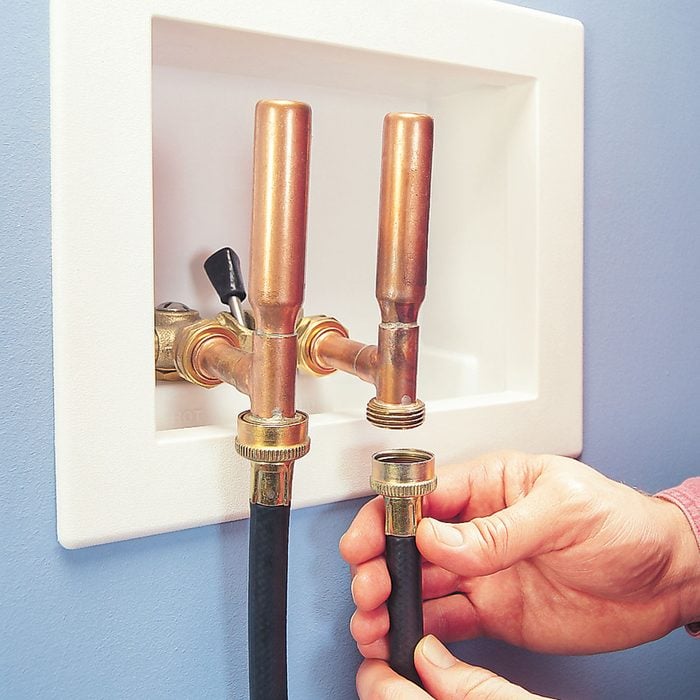Water Pipes Making a Banging Noise? Here’s How to Fix It
Updated: Apr. 14, 2024

The best cure for banging water pipes is a water hammer arrester with a lubricated internal piston. The sealed piston works better than capped pipes, which eventually fill with water.
Water hammering is caused by the quick shutoff of water supply lines. The energy in flowing water has to go somewhere, and when a valve is shut off, the pipes can flex and “hammer” against anything close — like nearby studs, joists or other water pipes.
Solenoid-triggered valves, like the water fill valves in washing machines, dishwashers and water softeners, shut off almost instantly. This not only causes the most ferocious hammering, but also puts strain on rubber hoses and soldered copper pipe fittings. Hand-controlled faucets usually don’t cause as much hammering because the shutoff is more gradual.
Are Banging Water Pipes Dangerous?
Water pipes that bang can be a source of concern for many homeowners. Although the noise may be annoying, it’s important to understand whether it poses any danger to your plumbing system. Generally, banging water pipes indicate an underlying problem that needs to be addressed.
Water hammering is the most common cause of banging water pipes. Although water hammering itself is not dangerous, it can damage your plumbing system over time if left unaddressed.
There are other less common causes of banging water pipes, including excessive water pressure, which can lead to leaks or burst pipes. It might also be the pipes are not properly supported, or plumbing joints are loose or faulty from old age, improper installation, or expansion and contraction due to temperature changes.
If you’re experiencing banging water pipes in your home, you should fix the issue or consult a professional plumber if you can’t correct the problem alone. This will ensure your plumbing system’s integrity in the future.
How to Fix Banging Water Pipes

The traditional solution of adding a capped length of copper pipe (above) works by trapping a bubble of air that acts as a shock absorber for the back pressure. But it only works for a while. Eventually, the air bubble shrinks because the air gets absorbed by the water until it disappears completely.
Instead, install a manufactured water-hammer arrester, available at home centers. There are various types, including in-line arresters, which can be installed on horizontal or vertical plumbing runs. Others mount between the spigot and washing machine hoses.
The closer you locate the arrester to the solenoid valves, the better. If necessary, you can add more in-line arresters to other water pipes near faucets or valves to further reduce hammering.